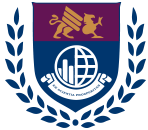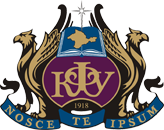V.I. Vernadsky Crimean Federal University is a higher education institution of rich, century-long history with a vast network of research and production facilities, which has more than 7,000 members of staff and over 32,000 students, including about 3,000 international students from over 50 countries.

Today, V.I. Vernadsky Crimean Federal University comprises 23 academic and non-academic units and 12 branches located across Crimea, including 10 academies and institutes, 7 colleges, 11 branches, and 12 research and science institutions and centres.
The history of the conception and development of the University is entwined with the history of Crimea. It was the complicated, trouble stricken and eventful 20th century that saw the development of forward-looking educational institutions in the Republic of Crimea, which, in their relatively brief period of existence, managed to gain success and respect in scientific and academic circles, made an invaluable contribution to the development of global and national science, and produced a number of prominent scientists, writers, and public figures.
Today, the University carries on a variety of student, teaching, research, and training activities which enable its students to acquire and develop knowledge in various fields of science, art, humanities, and medicine.
V.I. Vernadsky Crimean Federal University holds many international and national forums, conferences, events, meetings, and roundtables. The University has cooperation agreements with the leading national and foreign higher education institutions, regulatory bodies, major companies and enterprises of the Russian Federation and the Republic of Crimea. Being committed to promoting the development of research and science in the region, it initiates the establishment and development of various research and science institutions comprising students and faculty and staff representatives.
University’s production facilities, its cooperation with numerous institutions and companies provide students with the chance to gain practical skills and open a number of employment opportunities.
Training is delivered in a variety of settings beyond the traditional classroom, including language laboratories, fully-equipped specialized classrooms and multimedia classrooms, at student farms and partner companies. Students have at their disposal a unique, well-equipped academic library, rich both in training materials and research and fiction books.

V.I. Vernadsky Crimean Federal University offers numerous options in terms of leisure activities, such as performing arts societies, sports clubs, dance, song, and theatre groups.
The University maintains strong relations with its international partners in the framework of various research projects, students and faculty internship programmes.
Today, V.I. Vernadsky Crimean Federal University trains future professionals using novel opportunities that meet high-level national and global standards in education. The number of these opportunities has increased significantly with the establishment of the new federal-level university through the merger of leading Crimean universities. V.I. Vernadsky Crimean Federal University has developed into a major research and science centre and a source of pride for the Russian Federation and the Republic of Crimea.
History of the University
V.I. Vernadsky Crimean Federal University is a higher education institution located in Simferopol. It is one of the 10 federal universities in the Russian Federation.
The University traces its history back to the establishment of Taurida University, the first institution of higher education in Crimea, which was established in 1918 on the initiative of Solomon Krym.

Lectures at the Department of Physics and Mathematics and the Department of Medicine, located then in Yalta, started in May 1918. By autumn 1918, all five University departments – History and Philology, Physics and Mathematics, Law, Medicine and Agronomy – were relocated to Simferopol. They were accommodated in the premises of a former military hospital, women’s diocesan school, a seminary, and in private properties.
Among the originators of Taurida University were the scientists of Kiev University. They elected the first board headed by Rector, an eminent figure in medical science, Professor Roman Gelwig. After his death on October 13, 1920, Academician Vladimir Vernadsky was elected the University’s rector.
With the establishment of the Soviet authority, the University was reorganized. In February 1, 1921, it was renamed M.V. Frunze Crimean University. During the 1920s and early 1930s it served as the foundation for the establishment of the three higher education institutions: pedagogical, medical, and agricultural institutes.
Among the University’s most notable alumni are Academician Dmitry Shcherbakov (1922), Academician Igor Kurchatov, Member of the Ukrainian Academy of Sciences Kirill Sinelnikov (1923), Corresponding Members of the Academy of Sciences of the USSR Gleb Frank (1925) and Kirill Shchyolknin (1932).
A number of eminent scientists who are the pride and honour of Russian science worked at the peninsula’s first institution of higher education at different points in time. Among them were Vladimir Vernadsky, Vladimir Obruchev, Aleksandr Baikov, Vladimir Palladin, Abram Ioffe, Igor Tamm, Igor Kurchatov, Kiril Shchiolkin, Gleb Frank, and others.
The intention to create a new federal university was announced by Prime Minister Dmitry Medvedev on March 31, 2014 at a government meeting in Simferopol. In an interview with Izvestia newspaper on April 10, 2014, Minister of Education and Science of the Russian Federation Dmitry Livanov said that the federal university would be created on the basis of V.I. Vernadsky Taurida University.
Foreign nationals who have graduated from V.I. Vernadsky Crimean Federal University are employed in their chosen careers in almost every country across the globe.
Today, the University’s century-long experience and expertise, passed on from generation to generation, constitute the scientific foundation for education that has no equal in the Crimea.

 Крымский федеральный университет им .В.И. Вернадского
Крымский федеральный университет им .В.И. Вернадского














